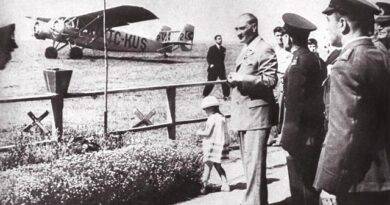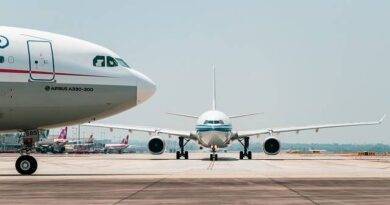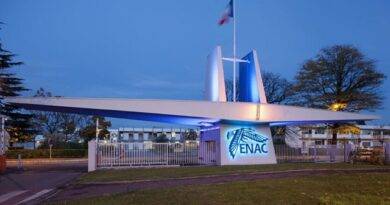Thrust Reversal – Definition and Types
Thrust reversal is a crucial mechanism employed in aircraft to effectively decelerate and reduce landing distances. This technique involves redirecting the engine’s thrust forward, directly opposing the aircraft’s motion. By countering the forward thrust, thrust reversal significantly shortens landing rolls and enhances safety during landing maneuvers.
Jet-powered passenger aircraft basically slow down using three different methods simultaneously.
1- Brake mechanism in landing gear
2- Spoilers located in the rear of the wings
3- “Thrust reversal” system
Apart from these methods, especially by military jets, drogue parachute and wire arrestors (Runway Arrestor Gear Systems) are used to slowdown of the aircraft after landing.
What is Thrust Reversal?
As you can understand from the name, reverses the direction of the thrust provided by the engines. The high pressure air coming out behind the engines starts to be sprayed towards the direction of the aircraft as much as possible. In this way, both the aircraft can stop in a much shorter time and the load on the brake mechanism on the landing gear is reduced.
Debunking the Myth: Thrust Reversal Doesn’t Reverse the Engine
Contrary to popular belief, thrust reversal doesn’t literally reverse the engine’s direction. Instead, it cleverly diverts the engine’s thrust – the hot exhaust gases or propeller airflow – forward. This creates a powerful air brake effect, effectively slowing down the aircraft.
Basically, three different thrust reversal systems are used in jet-powered passenger aircraft:
1- Bucket/Target Type Reverser:
A Bucket type reverser is a hydraulically actuated system that uses bucket type doors to reverse the flow of the engine hot gas stream. Whilst in forward thrust, the bucket doors form the final tail pipe nozzle of the engine. When reverse thrust is selected by the pilot, actuators close the buckets over the hot gas stream deflecting it forward. A mechanical lock holds the buckets in their extended position. Aim is to allow thrust to be increased without the associated risk of an uncommanded, asymmetric retraction of the buckets. It is also possible for the aircraft to move backwards with this system (keep in mind that this type of backward move is not an efficient way).
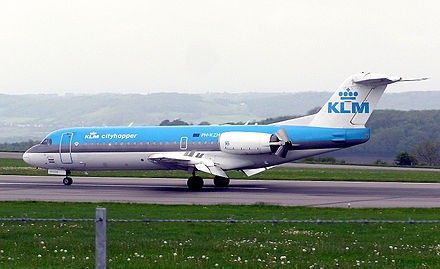
2- Clamshell Door Reverser:
The clam-shell door, or cascade, system is pneumatically operated. When activated, the doors rotate to open the ducts and close the normal exit, causing the thrust to be directed forward. The cascade thrust reverser is commonly used on turbofan engines. On turbojet engines, this system would be less effective than the target system, as the cascade system only makes use of the fan airflow and does not affect the main engine core, which continues to produce forward thrust.
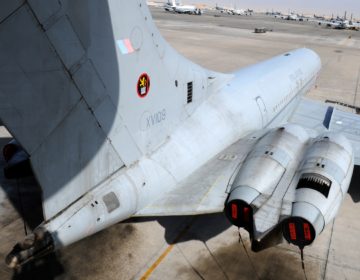
3- Cold Stream Reverser:
There are two different versions of this type of thrust reversal system:
A) Cold Stream Cascade Reverser
While the engine cover is opened as a backward slide, the engine outlet is also closed.
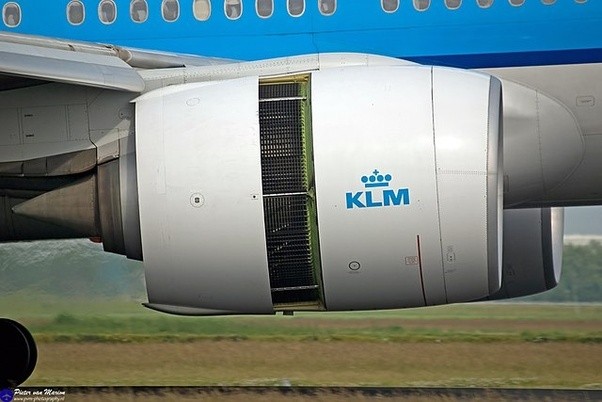
B) Cold Stream Pivoting Doors Reverser
When the four small covers on the engine are opened, the engine outlet is also closed.
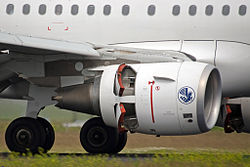
Applications of Thrust Reversal
Apart from its primary function of shortening landing distances, thrust reversal also serves additional purposes:
- Rejected Takeoff: In case of an aborted takeoff, thrust reversal can swiftly decelerate the aircraft, preventing a potential runway overrun.
- Ground Maneuvering: Enables aircraft to maneuver on the ground without relying solely on external tugs, particularly in confined spaces.
- In-flight Speed Reduction: While uncommon, thrust reversal can be employed in certain scenarios to reduce airspeed during flight, such as during steep descents.
Benefits of Thrust Reversal
The implementation of thrust reversal systems offers several notable advantages:
- Reduced Landing Distances: Significantly shortens landing distances, enhancing safety and reducing wear on brake systems.
- Improved Directional Control: Provides enhanced directional control during ground maneuvering, especially in tight spaces.
- Enhanced Takeoff Safety: Plays a critical role in aborting takeoffs and preventing runway overruns.
TR stands as an indispensable safety feature in modern aviation, contributing to shorter landing distances, improved directional control, and enhanced takeoff safety. Its versatility and effectiveness make it an integral component of aircraft design and operation.
References:
- TR Systems: Types and Mechanisms by Aeronautics Today: https://www.aviationfile.com/thrust-reversal-definition-and-types/
- Target-type TR on Wikipedia: https://en.wikipedia.org/wiki/Thrust_reversal
- Thrust Reversing by Purdue University: https://engineering.purdue.edu/jump/2062e39
